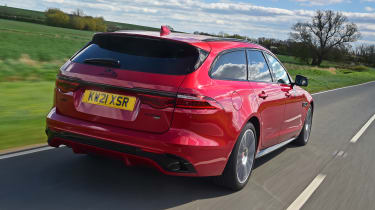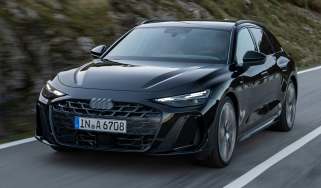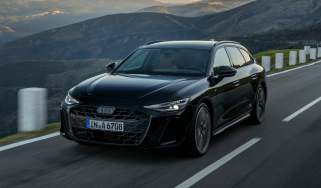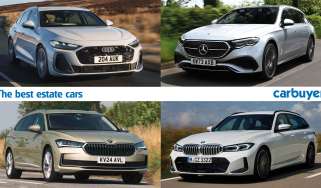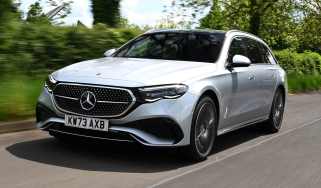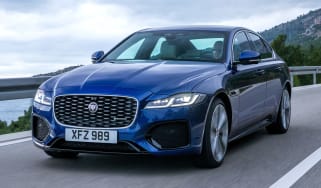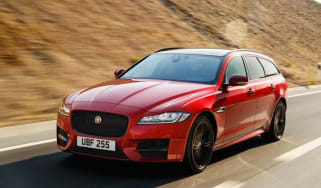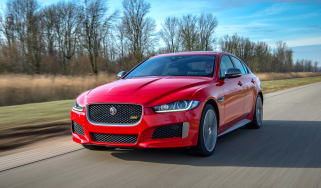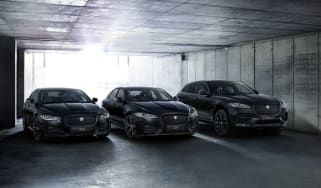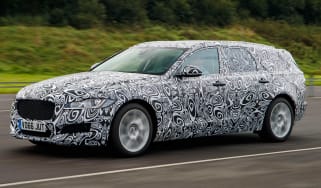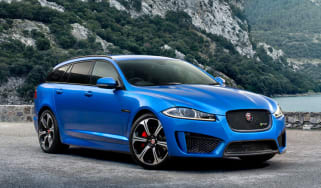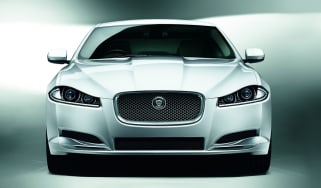Jaguar XF Sportbrake review (2017-2024)
"While rivals have better interiors, the Jaguar XF Sportbrake is a sharp-handling and elegant executive estate"
Pros
- Drives brilliantly
- Looks fantastic
- Practical
Cons
- Dashboard design dated
- Interior tech not up to competition
- Rivals cheaper to tax for fleet buyers
Verdict - is the Jaguar XF Sportbrake a good car?
Gone are the days when estate cars like the Jaguar XF Sportbrake played frumpy second fiddle to their saloon counterparts. Like its key rivals, the BMW 5 Series Touring and Mercedes E-Class Estate, the Jaguar XF Sportbrake arguably looks sleeker than its saloon sibling, offering 99% of the driving dynamics and greater practicality.
Jaguar XF Sportbrake models, specs and alternatives
Recent changes to the XF Sportbrake have also made it a whole lot cheaper, to the point it now undercuts those traditional rivals by several thousand pounds, and is more comparable in some cases to cars from the class below. At the same time, Jaguar has slimmed down the range of available engines recently, with just a single mild-hybrid diesel and a pair of petrol engines, badged D200, P250 and P300. Older models like the supercharged V6 petrol and the 3.0-litre V6 diesel are no longer around.
 Best estate cars on sale in 2025
Best estate cars on sale in 2025
In a car like this, it’s still the diesel that makes the most sense as far as running costs, company car tax obligations and purchase prices are concerned. The remaining diesel engine produces 201bhp and is available only in rear-wheel drive form, but a 0-62mph time of under eight seconds and combined economy of more than 50mpg make it an excellent all-rounder. You do get more power from the P250 and P300 petrols though – 247bhp and 296bhp, with the more powerful version offered in all-wheel drive form only.
More reviews
Once you’ve decided on your engine, you’ll want to choose your trim, and there are now three of these. R-Dynamic SE trim gets 19-inch alloy wheels, 12-way adjustable heated front seats, a power tailgate, an 11.4-inch touchscreen with Apple CarPlay and Android Auto, LED headlights, and a Meridian sound system. Stepping up to R-Dynamic HSE brings 20-inch wheels and 16-way adjustable Windsor leather seats, while the 300 Sport, only available with the top petrol engine, gets the kit from the models below it, and its own unique design of 20-inch wheels.
Although it’s 115kg heavier than the saloon, the XF Sportbrake is similarly enjoyable to drive. There seems to be more car behind you, naturally, but the steering responds accurately and sharply to driver inputs, the gearbox is smooth (if not lightning-quick) to change gear, while the suspension offers the perfect blend of comfort and firmness.
The XF Sportbrake has no major drawbacks in objective terms, but its interior is a bit underwhelming. Step from a BMW 5 Series into the Sportbrake and you’ll find the Jag is decidedly less modern, while the BMW’s material quality and attention to detail impress more.
There is, however, a pleasingly content atmosphere in the XF Sportbrake. While the 5 Series and the Mercedes E-Class offer numerous configurable screens, settings, buttons and modes, coupled with gloss-black plastic and intricately detailed metal finishes, the XF is more settled inside. You get the feeling BMW and Mercedes have built their executive estates so drivers can configure them to their hearts’ content, whereas the XF Sportbrake’s designers envisaged drivers would set their cars up once and then leave them alone.
That’s not to say it’s unsophisticated, by any means. Jaguar has significantly improved its infotainment system in recent years and the addition of Apple CarPlay and Android Auto is very welcome indeed, while the adjustable suspension and driving modes have a notable effect on the car’s behaviour, while the Activity Key waterproof wristband allows you to lock the car key safely inside while you go off adventuring.
Practicality is fundamental to estate cars and the XF does well in this regard. Its 563-litre boot is almost identical in size to the 5 Series Touring’s, while the load area is as flat as a billiard table – and more plushly finished than the BMW’s.
We must be less glowing where reliability is concerned, unfortunately. Jaguar managed a top ten position as a brand in the 2023 Driver Power customer satisfaction survey, which is very impressive, but its highest individual model was the F-Pace in 50th out of 75. The XF wasn’t on the list, but it’s worth noting that despite the brand’s decent finish, 44% of respondents reported faults with their cars in their first year – something that may also be less of an issue if servicing costs weren’t also so high.
